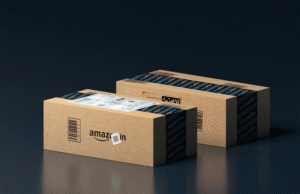The SAP Datasphere is a very good solution for a company that wants to maximize the potential of their data in the ever-changing world of data management. Today we will explore how this amazing device can be used as both a data warehouse and ingestion tool for moving data from SAP to popular cloud-based warehouses.
The figure, SAP Datasphere Architecture, shows a high-level architecture of SAP Datasphere.

Initial Steps of Modeling in SAP Datasphere

SAP Datasphere offers multiple modeling capabilities that address different user groups – from business analysts with deep business understanding to tech-savvy developers and power users. In a typical end-to-end scenario, the following two closely related components of SAP Datasphere are used/applied:”
- The SAP Datasphere Data Layer contains the basic modeling of the underlying data sources and tables.
- The SAP Datasphere Business Layer enables users to create their own business models on top based on business terms.
Data Warehousing Strategy of SAP

You are not forced to follow this paradigm in a short period of time. You can shift to the cloud in your own pace, combining the migration, hybrid and green-field approaches. For example, your path can include the following optional steps:
- In the first step, you can continue to develop models in SAP BW or SAP BW/4HANA and connect them as source in SAP Datasphere (approach B).
- Additionally, you can start using SAP Datasphere and SAP BW bridge for new topics (as part of approach C). Reuse standard extractors for SAP’s on-premise sources and leverage SAP’s business content to persist the data, including ABAP logic.
When you decide to discontinue your on-premise BW, SAP provides a tool support to migrate SAP BW 7.x and SAP BW/4HANA applications one by one to the SAP bridge (approach A).
- You have two options to transfer models that you have created or migrated in SAP BW bridge to the SAP Datasphere core tenant: manual import and / or model transfer with semantic integration (approach A and C).
Double Faced SAP Datasphere
In the field of data management, SAP Datasphere has two roles. First it operates as an effective data warehouse which holds your organizational data in one location. However, it goes beyond this function because it also performs excellently as a means of ingesting data, thereby making it invaluable to businesses who want to collate their SAP information with those kept on clouds.
Integration of Data into SAP Datasphere
Introduction
SAP Datasphere provides a large set of default Built-in-connectors to access data from a wide range of sources, in the cloud or on-premise, from SAP or from non-SAP sources or partner tools.
Connections provide access to data from a wide range of remote systems, cloud as well as on-premise, SAP as well as non-SAP, and partner tools. They allow users assigned to a space to use objects from the connected remote system as source to acquire, prepare, and access data from those sources in SAP Datasphere. In addition, you can use certain connections to define targets for replication flows.
SAP and Cloud Data Warehouses Reconciliation
One of the most exciting capabilities of SAP Datasphere is its ability to transfer information from non-SAP cloud databases. Here comes into play the feature called “Data Integration” in Datasphere.
Data Integration is what enables Datasphere integrate seamlessly with different cloud warehouses among them being Azure Synapse, Amazon Redshift, Google BigQuery and Snowflake. It thus serves as a link between your systems running on SAP and these powerful platforms located in clouds.

How Data Integration Works
Data replication and transformation capabilities in Datasphere, an SAP feature, help move your SAP data to cloud data warehouses. Here is how it works on different platforms:
Azure Synapse: Datasphere can establish a direct connection to Azure Synapse so that you can synchronize your data in real time. This ensures that your SAP data gets into Azure instantly for further analysis or other information sources combination.
Amazon Redshift: It is possible to extract and load SAP system data into amazon redshift with the use of Data Integration. As such, AWS advanced analytics as well as machine learning options can be used on SAP data.
Google BigQuery: Via Datasphere, it is possible to transfer data to Google BigQuery where powerful analytics engine from Google can be engaged in analyzing SAP related information.
Snowflake: There is a seamless integration between Datasphere and Snowflake that enables you as an enterprise to analyze your sap data using snowflakes’ cloud native architecture.
Why it’s important
It is not a small feat to make SAP data moveable into these cloud platforms rather, it is a big leap for several organizations. Here’s why:
You can now combine your SAP data with other sources of information in order to get a more holistic view of your business.
The cloud platforms have advanced analytics and machine learning which can offer new perspectives on your SAP data.
Cloud enables you to easily scale up storage and processing as the size of your data increases.
There is a potential for reducing costs by using the infrastructure of the cloud instead of maintaining everything on premises.
Summary
SAP Datasphere is much more than a data warehouse or an ingestion tool, thanks to its Data Integration capability. It bridges the gap between your SAP systems and the incredible powers of cloud data warehouses, making it a way forward for data analytics.
As you develop your data strategy, consider how SAP Datasphere may assist in breaking down information silos while revealing new discoveries. If you are thinking about centralizing your data, boosting analytics capabilities or simplifying your data architecture then Datasphere presents an exciting opportunity.
Always remember that bettering your approach to managing information is not a quick sprint but rather an enduring task. Take time to learn what exactly you want and see if Sap Datasphere can help out with this. This will add value to both your decisions on business matters and the contents of your database.s








